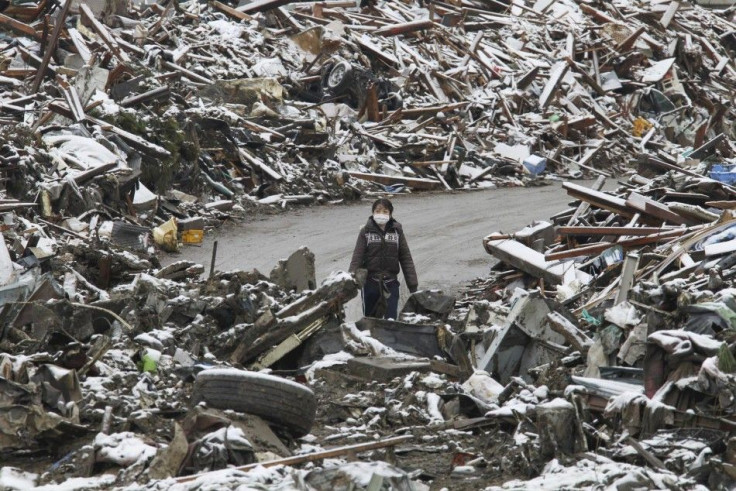Japan, Middle East/North Africa Crises Unlikely 'To Derail' Global Economy: IHS

The triple disaster in Japan and the ongoing turmoil in the Middle East and North Africa likely would have only a limited impact on the global economy - provided the twin shocks of higher oil prices and the supply chain disruptions from Japan do not get much worse, market research firm IHS said.
IHS Chief Economist Nariman Behravesh said global growth for 2011 is forecast to come in between 3.5 percent and 4.0 percent, reflecting minimal economic affects from the double shock of the twin events.
The bottom line is that in the most likely scenario - other than Japan and North Africa - growth in much of the world economy will not be derailed, Behravesh said. The faster growing regions of the world have the best chance of shrugging off the events.
However, Behravesh said that the near-term impact on some industries such as automotive, electronics and chemicals could be quite painful.
The greater threat to global growth is from rising oil prices, he said.
Oil
The spare capacity cushion for global oil output is shrinking at an alarming rate, and spare oil capacity has dropped to 3.85 million barrels per day (mbd) from 5 mbd , with Saudi Arabia ramping up production to offset the decline in Libyan exports, said Ruchir Kadakia, director at IHS CERA. Libya accounts for less than two percent of global production, Kadakia said, but contagion risks remain.
The price risk for oil remains to the upside, Kadakia said, with much of that being pushed by the growing demand from China. IHS CERA is projecting a 2011 average price for Brent Crude Oil of $105 per barrel.
The Japan disaster will have little impact on global oil fundamentals. In Japan, increased demand for fuel oil to support electric power generation disrupted by nuclear power plant outages will be offset by decreased demand from the transportation and industrial sectors.
Supply Chain
In Japan, the interruptions to electric power related to damage to power plants in the quake-effected area, and subsequent rolling blackouts that have impacted the entire country, have had a sharply negative effect that is broad and deep to every stage of the electronics supply chain, said Dale Ford, senior vice president at IHS iSuppli. Japan provides 60 percent of the worldwide supply of silicon wafers and, with 22 percent of the market, Japan is the second largest global supplier of semi-conductors.
Ford said it will take many manufacturers four to six months to get back to full capacity depending on the distance of their plants from the quake's epicenter and the speed with which Japan is able to get the electric power grid back on line.
The disruption, in the meantime, will be particularly acute in the electronics and automotive industries.
Automotive
The Japan disaster has had a profound effect on the automotive industry, said IHS Automotive Director Michael Robinet, noting that 13 percent of the global automotive industry is shut down and companies have lost 320,000 units of production since the quake. And the worst is yet to come because it will begin hitting outside Japan, and the ability to resource components is limited, he said.
Globally, auto manufacturers rely on Japan suppliers for electronic components - integrated circuits, sensors, semiconductors, LCD screens and powertrain components, such as gears, clutch packs, solenoids and specialty materials.
Robinet said the nuclear radiation perimeter and rolling blackouts will retard output for several months, with the most significant non-Japan impact expected at the six-to-eight week stage. IHS Automotive has reduced its Japan light vehicle sales forecast for 2011 by 9.2 percent and revised global sales downward by 0.5 percent.
Middle East and North Africa
As a result of the turmoil in the region - Bahrain, Egypt, Libya, Morocco, Oman, Tunisia and Yemen - IHS Global Insight Country Analysts Bryan Plamondon and Farid Abolfathi downgraded their economic growth forecast for the region as a whole by 0.8 percent to 4.5 percent and by 4.5 percent for North Africa to 0.5 percent. The outlook for the Middle East was raised 0.5 percent to 5.8 percent. Uncertainty and heightened economic risk will remain for some time because of the fluidity of the regional turmoil and unrest.
Japan
Economic growth in Japan is expected to fall 1.8 percent and 6.5 percent in the first and second quarters, respectively, then rise 14 percent in the third quarter as the country undertakes a rebuilding effort, and another 4.9 percent in the fourth quarter. The three prefectures hardest hit by the earthquake only account for four percent of the nation's economy. Estimates place capital losses at about $250 billion. The cost of rebuilding, said IHS Global Insight Japan Economist Dan Ryan, was expected to addone1 percentage point to the nation's debt/GDP ratio, taking it 205 percent.
Power Generation Challenge in Japan
IHS CERA Managing Director Jone-Lin Wang said that as much as 10 percent of Japan's electric power generation capacity could be off line for the next couple of months. Because demand is weak now, this may not create serious shortages. However, during the peak summer loads, electricity may have to be rationed.
Shipping Markets
Four ports in the quake zone in northeastern Japan were damaged. Ports from Tokyo south were unaffected, including 39 of the nation's 40 liquefied natural gas (LNG) terminals, said IHS Fairplay Maritime Analyst Christopher Palsson. He said exports of cars and components would drop dramatically because of the disruption to those industries but that shippers were anticipating increased imports of steel, cement and other material and equipment needed for rebuilding.
Europe
IHS Global Insight Chief European and U.K. Economist Howard Archer said the Japanese impact on European growth should be limited because the nation is not a large export market for most European countries. However, he noted that severe downside risks exist because of the disruptions in Japanese industrial activity to the global supply chain which could affect autos, telecommunications and consumer electronics. Other impacts include a reassessment of nuclear power generation in the wake of the Japan power plant problems.
Asia
While Japan is still a major trading partner for much of the Asia-Pacific Region, its significance has declined because of its protracted economic malaise and the rise of China, said IHS Chief Asia Economist Rajiv Biswas. A key near-term risk to the Asia Pacific economy is the impact of the supply-chain disruption. Asia Pacific growth, excluding Japan, is forecast at 7.1 percent for 2011, down from 8.4 percent in 2010. Lastly, the crisis at the Fukushima nuclear plant may result in significant changes in energy policy in Asia, reducing plans for nuclear energy and boosting the outlook for LNG and renewables.
© Copyright IBTimes 2024. All rights reserved.





















